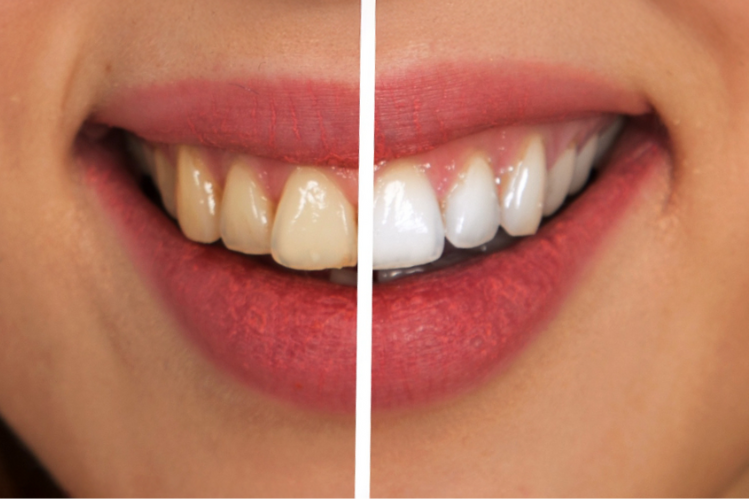
Table of Contents
- Understanding Teeth Whitening
- Common Causes of Tooth Discoloration
- Benefits of Teeth Whitening
- Can Yellow Teeth Become White Again?
- Teeth Whitening Methods in 2025
- Professional In-Office Whitening
- Dentist-Prescribed At-Home Kits
- Over-the-Counter Whitening Kits
- Whitening Toothpastes
- Natural & DIY Methods
- How Teeth Whitening Works: The Science
- Best Method to Whiten Teeth Fast in 2025
- Safety & Sensitivity Concerns
- Costs of Teeth Whitening in 2025
- Maintaining Your Results
- Best Rated Teeth Whitening Toothpastes Online in 2025
- Best Way to Whiten Teeth at Home
- Why Choose ALIGNERCO Teeth Whitening?
- Best Way to Whiten Teeth
- FAQs
A bright, white smile has always been a highly desirable attribute for a person. By 2025, with advances in dental care, there are more options than ever before for whitening teeth, including professional treatments, at-home treatments, and small lifestyle changes. So, with so many options available, why not ask the questions we all want the answers to: What is the best way to lighten teeth? Is it safe? Is it worth it?
In this guide, we will discuss everything, including the science of whitening teeth, the best options for whitening teeth, safety, cost, and whether or not it is realistic to turn yellow teeth white. In short, you will find a complete guide to teeth whitening to help you understand better and choose accordingly.
Understanding Teeth Whitening
Teeth whitening is the process of brightening the color of your teeth by removing stains or discoloration. There are different forms of teeth whitening treatments ranging in effectiveness, cost, and safety. Treatment options include professional dental treatments, over-the-counter non-professional dental treatments, and home remedies.
The enamel, or the outer layer of your teeth, is white, but over time it can pick up stains from coffee, tea, red wine, smoking, and sometimes even certain antibiotics can cause discoloration. The dentin is the yellowish tissue underneath enamel; teeth whitening treatments remove surface stains using abrasives, or bleach deeper stains, using a bleaching agent such as hydrogen peroxide or carbamide peroxide.
In 2025, whitening won't just be about appearance and beauty; it will prepare you for confidence, expression, and impact. Used well, you can restore the natural brightness of your smile and maintain its ideal state.
Common Causes of Tooth Discoloration
Tooth discoloration may develop slowly over time or appear suddenly, depending on the cause. While some staining is a natural part of aging, certain internal and external factors can make the process happen faster. Here are the most common reasons:
Diet
Some foods and drinks are high in chromogens, pigment-producing compounds, that cling to and stain tooth enamel. Coffee, tea, red wine, and cola are well-known offenders because their dark colors and acidity make it easier for stains to set in. Similarly, richly pigmented foods like blueberries, blackberries, cherries, beets, soy sauce, and curry can leave stubborn stains. The more often these are consumed, especially without cleaning your teeth afterward, the greater the risk of noticeable discoloration.
Tobacco Use
Smoking and chewing tobacco are notorious for causing deep, lasting tooth stains. Nicotine and tar seep into the tiny pores in enamel, creating brown or yellow streaks that regular brushing can’t easily remove. Beyond aesthetics, tobacco use raises the risk of gum disease, cavities, and oral cancers, making it one of the most harmful habits for oral health.
Aging
Over the years, the enamel, the tooth’s thin outer layer, naturally wears down from chewing, brushing, and exposure to acids in foods and drinks. This thinning reveals more of the underlying dentin, which has a natural yellow tone. Even with excellent oral care, age alone can lead to a less bright smile.
Poor Oral Hygiene
When brushing and flossing aren’t done regularly, plaque, a sticky film of bacteria, builds up on teeth. Over time, this hardens into tartar, which appears yellow or brown. Once tartar develops, it can’t be removed with normal brushing and requires professional cleaning. Poor oral hygiene also contributes to tooth decay and gum disease, further affecting tooth color.
Medications
Some medicines can darken teeth by directly staining enamel or by affecting tooth formation. For instance, tetracycline and doxycycline, antibiotics sometimes used in childhood, can cause internal discoloration if taken while teeth are developing. Certain antihistamines, antipsychotics, chemotherapy treatments, and blood pressure medications can also change tooth color.
Fluorosis
Fluorosis occurs when children consume too much fluoride, often from water, toothpaste, or supplements, while their teeth are forming. This can cause white streaks, spots, or even brown staining on enamel. Mild cases are mostly cosmetic, but severe fluorosis can weaken enamel and alter a tooth’s appearance.
Benefits of Teeth Whitening
While a brighter smile is the obvious reward, teeth whitening offers much more than just visual appeal.
Boosts Self-Confidence
A whiter smile can make you feel more attractive and self-assured in social and professional settings.
Creates a Youthful Appearance
Whiter teeth can make your face appear fresher and younger, helping to counteract the effects of aging.
Encourages Better Oral Hygiene
Many people develop stronger oral care habits after whitening to maintain their results, improving overall dental health.
Makes a Positive First Impression
Whether it’s for a job interview, a date, or public speaking, a bright smile can leave a lasting positive impression.
Quick, Noticeable Results
Professional whitening can produce dramatic changes in a single visit, making it one of the fastest cosmetic dental procedures.
Can Yellow Teeth Become White Again?
Yes, most yellow teeth can be restored to a lighter shade. Success depends on the cause of discoloration. Surface stains from food or tobacco typically respond very well to whitening treatments. Yellowing from thinning enamel due to aging may still improve, but the change could be more subtle.
Teeth Whitening Methods in 2025
Today’s options fall into four categories: professional treatments, dentist-prescribed at-home kits, over-the-counter products, and natural or DIY remedies. Your choice depends on your budget, schedule, and tooth sensitivity.
- Professional teeth whitening
- At-home teeth whitening kits
- Teeth whitening strips
- Teeth whitening trays
- Whitening toothpastes
- Whitening pens
Professional In-Office Whitening
If you are wondering how to whiten teeth fast, nothing beats in-office dental whitening.
How it works
A dentist applies a concentrated hydrogen peroxide or carbamide peroxide gel.
- A special light or laser activates the gel for faster whitening.
- Sessions last 30–90 minutes.
Pros
- Dramatic results in one visit (up to 8 shades lighter)
- Supervised by a dentist for safety
Cons
- Cost: $300–$1,000
- Possible temporary sensitivity or gum irritation
Best for: Special events, severe staining, or instant results
Dentist-Prescribed At-Home Kits
These include custom trays and professional-grade gel.
How it works
- The dentist takes impressions to make trays that fit perfectly.
- You fill trays with gel and wear them for 30 minutes to several hours daily.
Pros
- More affordable than in-office whitening
- Even results due to the custom fit
- Noticeable change in 1–2 weeks
Cons
- Requires consistent daily use
- Slower than in-office treatments
- Cost: $100–$600
Over-the-Counter Whitening Kits
Available online or in stores without a dentist visit.
Popular types: Whitening strips, LED systems, pre-filled trays, whitening pens
Pros
- Affordable (from $20)
- Convenient for at-home use
Cons
- Less powerful than dentist-prescribed products
- It may take longer and result in uneven whitening
Whitening Toothpastes
Often contain mild abrasives, peroxide, or activated charcoal to lift surface stains.
Pros
- Gentle enough for daily use
- Helps maintain results after whitening
- Affordable ($5–$20)
Cons
- Won’t change natural tooth shade
- Works best as maintenance rather than a main whitening method
Natural & DIY Methods
Some people opt for natural whitening methods, such as:
- Baking soda paste
- Oil pulling with coconut oil
- Eating crunchy fruits like apples and carrots
Caution: Overuse of baking soda or acidic remedies (like lemon juice) can erode enamel.
How Teeth Whitening Works: The Science
Whitening gels use peroxide-based bleaching agents:
- Hydrogen peroxide: Fast-acting, common in professional treatments
- Carbamide peroxide: Slower release, common in at-home kits
These agents break down stain molecules into smaller, less pigmented particles, making teeth appear lighter.
Best Method to Whiten Teeth Fast in 2025
If you’re short on time:
- In-office laser whitening – Instant results in one session
- High-strength at-home kits – Visible change in 3–5 days
- LED whitening pens – Ideal for quick touch-ups
- Whitening strips – Effective in 1–2 weeks
Safety & Sensitivity Concerns
Whitening is safe when done properly, but incorrect usage can harm enamel or irritate gums.
Safety Tips
- Follow recommended usage times
- Use fluoride or desensitizing toothpaste before and after treatment
- Have a dental checkup before whitening to address any issues
- Avoid whitening during pregnancy unless approved by your dentist
Costs of Teeth Whitening in 2025
| Method | Average Cost | Results |
| Professional Teeth Whitening | $300 - $1,000 | One visit |
| At Home Kits | $100 to $600 | 1 - 2 weeks |
| Over the counter | $5 to $400 | 1 - 2 weeks |
Maintaining Your Results
Even the best whitening fades if not maintained.
Tips for Long-Lasting Brightness
- Limit coffee, tea, and red wine
- Rinse after consuming stain-causing foods
- Quit smoking
- Use whitening toothpaste a few times weekly
- Schedule touch-ups every 6–12 months
Best Rated Teeth Whitening Toothpastes Online in 2025
Some of the best rated teeth whitening toothpastes to buy online are listed below.
- Crest 3D White Brilliance features a high peroxide content to effectively tackle surface stains.
- Colgate Optic White Pro Series: Gentle yet powerful in brightening your smile.
- Sensodyne Pronamel Gentle Whitening: Ideal for those with sensitive teeth.
- Boka Nano Hydroxyapatite Toothpaste
- Lumineux Whitening Toothpaste
- Opalescence Whitening Toothpaste
- Sensodyne Clinical White Toothpaste
Best Way to Whiten Teeth at Home
Are you tired of those unwanted stains and yellow teeth? ALIGNERCO brings the ease to whiten your teeth at home. Get professional-grade results in no time with our advanced technology. In just 20-25 minutes daily, you can get rid of your coffee stains easily.

Need a more handy solution?
Get our portable and easy-to-use whitening solution with peroxide, the Teeth Whitening Pen . They are conveniently designed for whitening on the go. It includes Peroxide, Glycerol, and Propylene Glycol for effective whitening.

Why Choose ALIGNERCO Teeth Whitening?
- Advanced technology
- Budget friendly
- Rapid results
- Safe for enamel
- Easy application
Best Way to Whiten Teeth
The best way to whiten teeth depends on the outcome you desire or are willing to pay for. If you want an instant and dramatic result, and are willing to spend the money. If you are inclined to a gradual whitening and want to avoid higher costs, at-home whitening kits, over-the-counter strips, or best-rated teeth whitening toothpaste online are viable alternatives. ALIGNERCO offers at-home teeth whitening with an easy-to-use whitening kit and whitening pens.
FAQs
1. What is the best procedure to whiten your teeth?
It depends on your goals. For instant results, in-office whitening is unmatched. For affordability and convenience, dentist-prescribed at-home trays work very well.
2. Can yellow teeth become white again?
Yes. Most yellow stains, especially from food, drinks, or smoking, respond well to whitening. Severe cases may need multiple treatments or veneers.
3. How to properly do teeth whitening?
Follow instructions carefully, avoid overuse, and prep with a dental cleaning. Use desensitizing toothpaste if needed.
4. Is $500 for teeth whitening worth it?
If you want fast, dramatic results with professional oversight, yes. Pair it with at-home maintenance for longer-lasting effects.
Citations:
Clinic, C. (2025, June 17). Brighten your smile: How to get Whiter teeth. Cleveland Clinic. https://health.clevelandclinic.org/how-to-whiten-teeth
Professional, C. C. M. (2025d, July 8). Tooth discoloration. Cleveland Clinic. https://my.clevelandclinic.org/health/symptoms/10958-tooth-discoloration
American Dental Association. Whitening (https://www.ada.org/resources/research/science-and-research-institute/oral-health-topics/whitening). Updated 8/16/2022. Accessed 7/3/2025.
Bloomquist RF, Sword RJ, Londono J, Haywood VB. Bleaching: the initial treatment consideration for tetracycline-stained teeth (https://pubmed.ncbi.nlm.nih.gov/34172864/). Br Dent J. 2021. Jun;230(12):807-812. Accessed 7/3/2025.
Gasmi Benahmed A, Gasmi A, Menzel A, et al. A review on natural teeth whitening (https://pubmed.ncbi.nlm.nih.gov/34915121/). J Oral Biosci. 2022 Mar;64(1):49-58. Accessed 7/3/2025.
National Library of Medicine (U.S.). Tooth – abnormal colors (https://medlineplus.gov/ency/article/003065.htm). Reviewed 3/31/2024. Accessed 7/3/2025.
Zhu Z, Yu Q, Qi G, et al. Tigecycline-Induced Tooth Discoloration in Children Younger than Eight Years (https://pubmed.ncbi.nlm.nih.gov/34228549/). Antimicrob Agents Chemother. 2021 Aug 17;65(9):e0085421. Accessed 7/3/2025.





